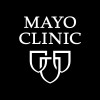
Evaluation of Increased Fruits and Vegetables Consumption in Chronic Kidney Disease
Chronic Kidney DiseasesThis study aims to investigate the feasibility of increasing dietary consumption of a rich variety of fruits and vegetables (including those that are potassim-rich) in patients with chronic kidney disease through use of nutritional counselling and hyperkalemia management with patiromer

Occurrence of Emerging Infections After Placement of a Peritoneal Dialysis CatHeter
End Stage Renal Disease on DialysisPeritoneal DialysisPeritoneal dialysis, which appeared at the end of the 1970s, quickly proved its worth both in terms of its effectiveness and of its ease of compliance, which guarantees an improved quality of life. To date there are different modes of application of this technique: Continuous Ambulatory Peritoneal Dialysis, and Automated Peritoneal Dialysis. Whatever the technique used, the placement of a dressing covering the exit site of the catheter is necessary just after the placement of the PD catheter and this so that the site of emergence is kept dry until healing (in general 2 to 4 weeks). Once the emergence site has healed, the technique can be started. Discharge site infections are a major predisposing factor for the development of peritonitis. Numerous studies in different parts of the world have shown that the rates of PD-related infections have steadily declined over the past 10 to 20 years. Several recommendations for the prevention and treatment of emergence site infections have been published by the International Peritoneal Dialysis Society. Several studies nonetheless call into question the recommendations by showing that catheter infection is not linked to the number of risk factors present at the time of catheter insertion, nor to the prescription of antibiotic prophylaxis, nor to the the experience of the caregiver, the antiseptic used or the early dressing change. In addition, only antibiotic prophylaxis at catheter placement is strongly recommended. Regarding the other measures, their relevance is not always demonstrated and their application varies considerably from one center to another. In addition, many authors have sought to establish a definition of catheter infections in order to allow an optimal assessment of their frequency. However, these definitions are not universal and have certain limitations. The objective of this work is on the one hand to better characterize the incidence of infections at the site of emergence in peritoneal dialysis, and on the other hand, in the absence of a definition established according to the recommendations, to use the score de Schaeffer, is in particular the value of this score which would make it possible to define more precisely the presence of an infection.

Effectiveness of the CDK-SMS Nursing Intervention for Adults With Chronic Kidney Disease
Renal InsufficiencyChronicType of Study: a pragmatic randomized clinical trial. Research question How effective is the CKD SMS self-management nursing intervention on self-management behaviors, self-efficacy, and adherence in adults with early-stage CKD compared to usual care? General objective To determine the effectiveness of the self-management nursing intervention (CKD SMS) on self-management behaviors, self-efficacy, and therapeutic adherence in people with CKD in early stages compared to usual care. Target population: Adult men and women with chronic kidney disease in stages 1-4, with different characteristics such as educational level, socioeconomic status, and marital status. Taking into account that the definition of early stages through the criteria demarcated by the Colombian clinical practice guideline, where the glomerular filtration rate (GFR) is the indicator for stratification as follows: stage 1 people with a GFR less than or equal to 90 (ml (min / 1.73 m2), stage 2 people with GFR between 60-89 (ml (min / 1.73 m2), stage 3 people with GFR between 30-59 (ml (min / 1.73 m2)) and stage 4 people with GFR between 15-30 (ml (min / 1.73 m2) who attend kidney protection programs of the Renal Units in Colombia. STUDY VARIABLES Among the variables that are available for the present study are: Independent Variables: Sociodemographic characteristics, related to the disease or clinical condition and the CKD intervention. Dependent variables: Self-management behaviors, therapeutic adherence, and self-efficacy. Within the mediating, shaping or confounding variables, the following are found according to what is established in the literature: age, gender, level of education, time of diagnosis and other comorbidities, which are initially considered independent variables and will be measured. In the study, for its management, strategies such as randomization will be used, the differences between the crude estimates of an association and those adjusted considering a confounding variable will be identified and its adjustment is responsible for at least 10% in the magnitude of the difference. INTERVENTIONS CKD SMS intervention CKD SMS (Chronic Kidney Disease Self-Management Support) intervention Conventional intervention The conventional intervention corresponds to the protocol established in the program of the renal unit for the management of people with CKD in early stages.

Supporting Self-Management of Healthy Behaviors in Diabetes, Kidney Disease, and Hypertension
Renal InsufficiencyChronic2 moreThe planned intervention, entitled, Supporting Self-Management of Health Behaviors to Optimize Health (SMART-HABITS for Health), aims to provide support for patients with chronic kidney disease, hypertension and diabetes by providing text messages delivered as motivational reminders and support to encourage blood pressure self-monitoring through goal setting, customized task prompts via text message and feedback, leveraging social connections, and use of a gamification design.

Protein and Exercise Training in Chronic KIDNEY Disease
Kidney DiseasesMuscle LossWhen patients progress to the final stage of chronic kidney disease (CKD) and require hemodialysis treatment, they typically have lost so much muscle function that they are no longer physically independent. However, due to disease- and hemodialysis-related muscle catabolism, dietary protein and exercise interventions are only capable to attenuate the decline in physical function of patients on hemodialysis treatment. Therefore, lifestyle interventions to increase muscle function should be implemented before hemodialysis is required. However, it is still a matter of debate whether muscle protein synthesis rates of patients with advanced CKD can be increased with a patient-tailored dietary protein and exercise intervention.Therefore, the current study will assess MPS rates during habitual lifestyle and during an interventional program including dietary protein and exercise in patients with advanced CKD. In addition, we will compare MPS rates during free-living conditions between patients with advanced CKD and healthy controls.

Evaluation of Cardiovascular Risk Factors in Incident Dialysis Patients
Chronic Kidney DiseaseTo evaluate the relationships between bone mineral markers levels at dialysis start and vascular calcification progression during a 2 year follow up

Pharmacokinetic/Pharmacodynamic Parameters of NNG-DEPO (Stimus) With Aranesp® (Amgen) in Treatment...
Chronic Kidney DiseaseThis is a double-blind, randomized, active-control study with 2-study arms-darbepoetin alfa biosimilar and Aranesp, noninferiority trial design in dialysis patients. Dialysis patients will be randomized into 1:1 ratio to receive either Darbepoetin alfa or Aranesp 0.75 µg/kg by subcutaneous injection every other week for 24 weeks. Pharmacokinetic/pharmacodynamic parameters for evaluation are assessed as per study endpoints at defined time points on all patients. During the treatment, dose adjustments will be made as necessary to achieve a hemoglobin response, defined as maintaining Hb in target range 10 - 12 g/dL.

Safety and Tolerance of Increased Doses of HRS-1780 Tablets in Healthy Subjects
Chronic Kidney DiseaseThis is a randomized, double-blind, placebo-controlled phase I clinical study. The primary objective is to evaluate the safety, tolerability, PK, and PD of single- and multiple-dose HRS-1780 in healthy subjects, and to evaluate the food effect on PK of HRS-1780.

A Study to Compare Efficacy and Safety of Nanogen's Darbepoetin Alfa With Aranesp® (Amgen) in the...
AnemiaChronic Kidney Disease Requiring Chronic DialysisThis is a double-blind, two-arm, randomized, multicenter to compare the efficacy and safety of NNG-DEPO and Aranesp in CKD on dialysis patients. Patients aged 18 to 65 years (inclusive), diagnosed with anemia due to CKD in dialysis, who meet all inclusion criteria, requiring treatment with Darbepoetin alfa. The study subjects (patients) will be randomized into a 1:1 ratio to NNG-DEPO and Aranesp treatment arms respectively. Patients will receive either NNG-DEPO or Aranesp 0.75 µg/kg by subcutaneous injection every other week for 24 weeks. During the treatment, dose adjustments will be made as necessary to achieve a hemoglobin response, defined as maintaining Hb in the target range of 10 - 12 g/dL.

A Study of Renal Microvessel Imaging for Chronic Kidney Disease
HealthyChronic Kidney DiseasesThe purpose of this research is to study the efficacy of ultrasound microvessel imaging for evaluation of Chronic Kidney Disease. Definity is an ultrasound contrast agent currently approved by the FDA for use on the heart, liver, and urinary tract. This study will look at its effectiveness on the kidney.
